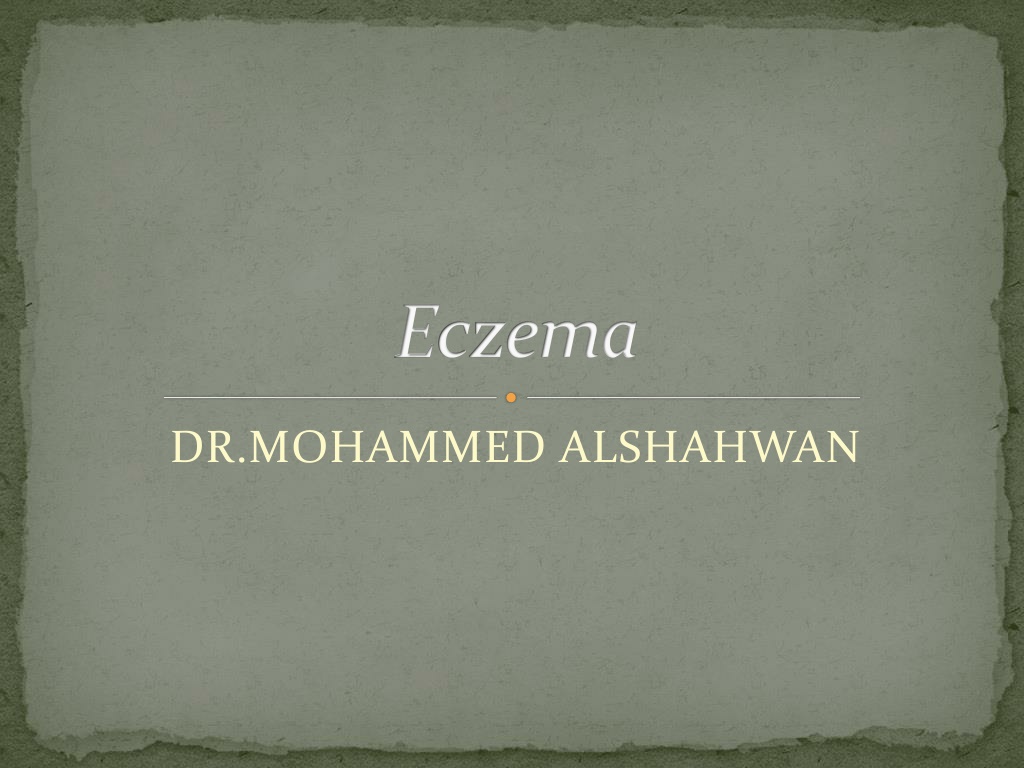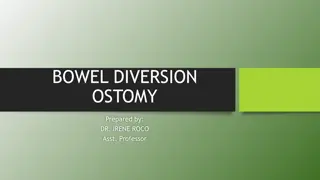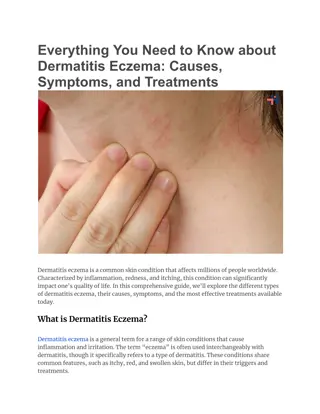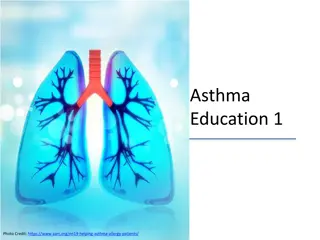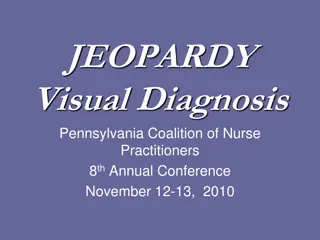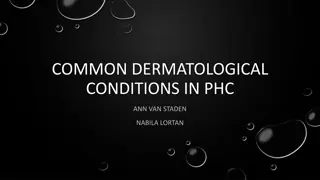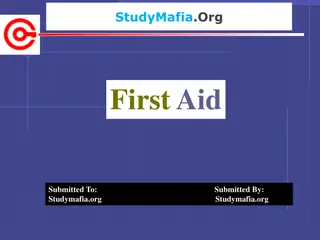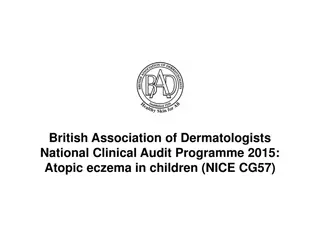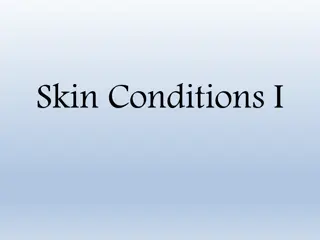Eczema: Definition, Types, and Management
This content explores the definition, classification, primary presentations, pathogenesis, and management of different types of eczema. It covers related disorders, such as atopic dermatitis, and discusses complications like infections and ocular issues.
Download Presentation

Please find below an Image/Link to download the presentation.
The content on the website is provided AS IS for your information and personal use only. It may not be sold, licensed, or shared on other websites without obtaining consent from the author.If you encounter any issues during the download, it is possible that the publisher has removed the file from their server.
You are allowed to download the files provided on this website for personal or commercial use, subject to the condition that they are used lawfully. All files are the property of their respective owners.
The content on the website is provided AS IS for your information and personal use only. It may not be sold, licensed, or shared on other websites without obtaining consent from the author.
E N D
Presentation Transcript
Eczema DR.MOHAMMED ALSHAHWAN
OBJECTIVES To know the definition & classification of Dermatitis/Eczema To recognize the primary presentation of different types of eczema To understand the possible pathogenesis of each type of eczema To know the scheme of managements lines
A spectrum of related disorders with pruritus being the hallmark of the disease. Acute chronic
Atopic Seborrheic Contact Allergic Irritant Dyshidrotiform Asteatotic Stasis Neurodermatitis (Lichen Simplex Chronicus)
ATOPIC DERMATITIS Very common disease affect 10% of children More than 40% will remit completely during childhood Cause : Genetic factors skin barrier defect Immune dysregulation Triggers Autoallergen Microbes Food
Adult AD Regional dermatitis Discoid eczema Childhood AD juvenile planter dermatosis
Complications Infections Impetigo Eczema herpeticum Immunological abnormalities urticaria contact dermatitis Ocular complication cataract Keratoconus Keratoconjunctivitis Growth retardation
Management Hydrate the skin Avoid triggers
Active treatment Topical corticosteroids Topical calcineurin inhibitor Oral H1 antihistamine Systemic Corticosteroids Phototherapy NBUVB, PUVA Immunosuppressive therapy
SEBORRHEIC DERMATITIS Chronic dermatitis that affect male more between the age of 20- 50 years. Causes hereditary Seborrheic status M. furfur Nutritional def. (SD-like rash) Common associated with Parkinson disease Facial paralysis HIV and immune suppression
Treatment Anti-dandruff shampoo 2% ketoconazole 2% selenium sulfide Topical corticosteroids Topical calcineurin inhibitor Oral Isotretinoin Oral H1 antihistamine Systemic Corticosteroids Immunosuppressive therapy
CONTACT DERMATITIS Contact irritant dermatitis It account for 80% of occupational skin diseases It result of direct cytotoxic damage to keratinocytes in any person. Contact allergic dermatitis It account for 7% of occupation related diseases It is caused by allergen that trigger type IV hypersensitivity reaction in a sensitized person.
